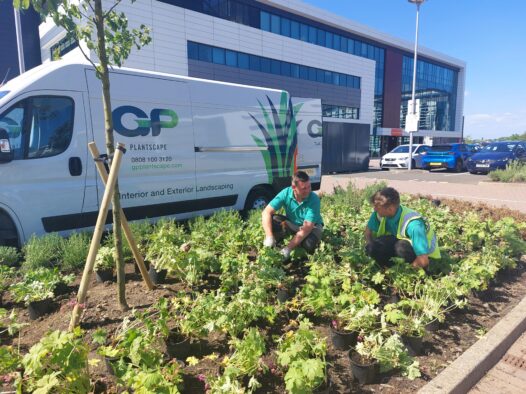Live versus artificial
With many offices reoccupied and the prospect of a more ‘normal’ festive season on the horizon, it’s time to put up your Christmas tree.
But in the face of a climate emergency, should you be opting for a real or a fake tree to minimise your carbon footprint?
One option may be to ditch the Christmas tree altogether.
Really?
Spreading goodwill and fostering festive spirt amongst your staff is important for morale and wellbeing. Critical at a time when the retention and attraction of skilled employees are widespread challenges.
So, is it real or replica to minimise your environmental impact?
From our research we’ve discovered it’s largely dependent on the disposal and reuse of your tree and it’s decorations.
Artificial Christmas trees
The intense process used to produce an artificial Christmas tree and its transportation contribute to its sustainability credentials. Fuel use and industrial emissions from the manufacturing process significantly impact the carbon footprint of an artificial tree.
But key to the equation in calculating the carbon footprint of a fake Christmas tree is the number of times it’s reused. According to The Carbon Trust, ‘an artificial tree used over multiple years (7-20 times depending on the weight and different materials in the tree) is better for the environment than buying a new, commercially grown tree every year.’
Hiring a replica Christmas tree can therefore help to keep your carbon emissions in check.
Here at GP Plantscape, we aim to reuse our artificial Christmas tree stock for at least ten years. And it’s not just the tree we reuse. The life span of our baubles, decorations, garlands and lights are all maximised to reduce our environmental impact.
Of course, the quality of your tree is still one of our top priorities. To ensure your display looks ‘brand new’ every year, our teams practice excellent husbandry, caring for our Christmas stock all year round.
An artificial Christmas tree, used time and time again can therefore be a viable sustainable consideration over a freshly felled live tree.



Live Christmas trees
When it’s growing, a real Christmas tree will absorb carbon from the environment and release oxygen. An obvious plus for the real tree in the sustainability debate.
But the disposal of the tree has a significant impact on its carbon footprint. A live tree that ends its days in landfill produces methane gas when it decomposes. Compared to carbon dioxide, methane gas is 80 times more potent at warming, over a 20-year period.
But recycling your live tree can make all the difference when it comes to it’s environmental impact.
The Carbon Trust say that a 2-meter-tall real Christmas tree, with no roots, has a carbon footprint of 16kg CO2e if it ends up in landfill, but this can be reduced by a whopping 80% if the tree is replanted or chipped and spread.
If you hire a live Christmas tree from GP Plantscape, it’s sourced locally to minimise transportation and chipped after use.


Improve your sustainability by renting
The route to maximising the sustainability of your Christmas tree is therefore dependent on multiple factors, not just a simple real versus artificial choice.
Sympathetic disposal of live trees and reuse of artificials are key to reducing the carbon footprint of your Christmas decorations.
Whatever your preference, be it live or replica, by renting your tree from GP Plantscape, we can help to minimise your impact on the environment whilst providing a fantastic festive display for your building.
For more information on our Christmas service click here or contact us at enquiries@gpplantscape.com or on 0808 100 3120.
Latest News
and plant care tips.
























